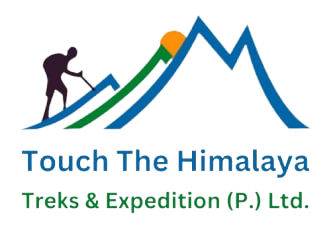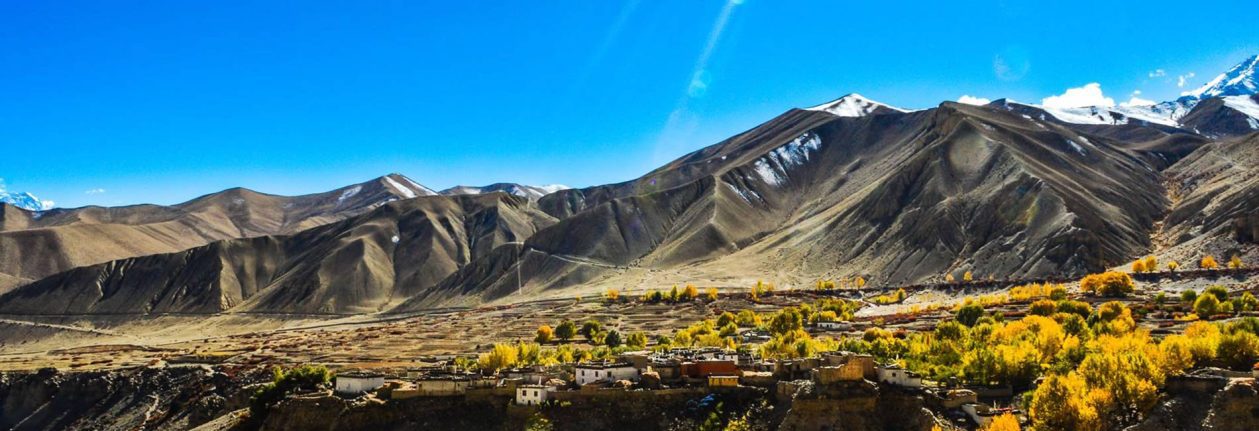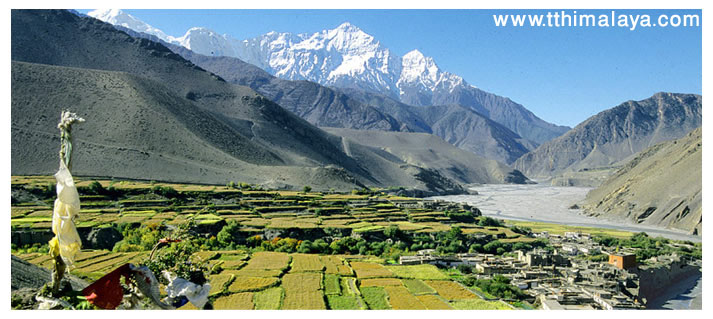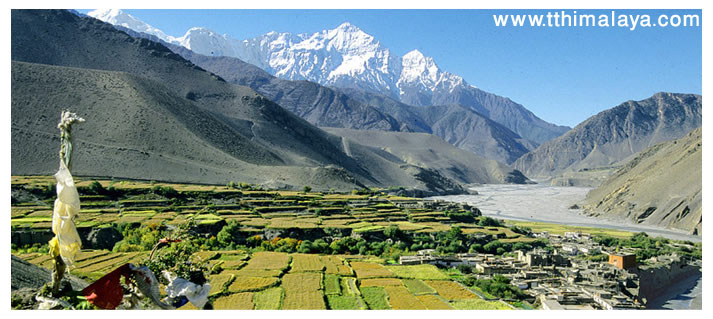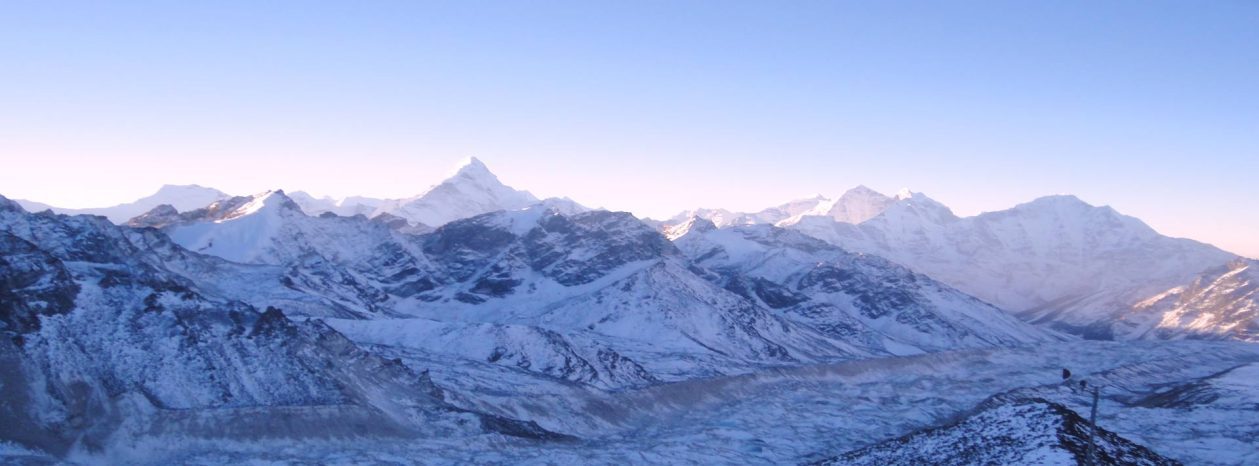Upper Mustang Trekking -17 days
Hidden Treasure of Nepal-
Duration
17 Days
-
Activity
Trekking
-
DifficultyModerate Trek
These treks are slightly more challenging than easy treks and require a moderate level of physical fitness. The altitude may go up to 4,000 meters, and the terrain can be rugged and steep at times. The trails are usually well-defined, but there may be some uphill climbs and rocky sections. Examples of moderate treks in Nepal are the Annapurna Base Camp Trek, Everest Base Camp Trek, and the Langtang Gosainkunda Trek.
-
Max. Altitude
3880 m
-
Starts
Pokhara
-
Ends
Pokhara
-
Group Size
Minimum: 2 pax
-
Best Season
March-May/Sept-Dec
PRICE PER PERSON
- 1 PAX US$2581
- 2 PAX US$1865
- 3 PAX US$1776
- 4 PAX US$1763
- 5-10 PAX US$1730
- 11-20 PAX US$1699
- Highlights
- Itinerary
- Route Map
- What Included / Excluded
- Dates & Availability
- Photos & Videos
- Additional Information
TRIP HIGHLIGHTS
- Encounter barren desert-like terrain, deep canyons, towering cliffs, and surreal rock formations.
- Explore the medieval walled city of Lo Manthang, the capital of the former Mustang Kingdom.
- Visit ancient monasteries such as Lo Gekar Monastery, Jampa Lhakhang, and Chhoede Monastery.
- Fascinating cave dwellings carved into the cliffs, once used as meditation chambers by Buddhist monks.
- Explore the intriguing cave dwellings of Chhoser, where monks have lived and meditated for centuries.
- Opportunity to witness the vibrant Tiji Festival in Lo Manthang, celebrates the victory of good over evil and features colorful masked dances, music, and rituals performed by the local community.
- Interact with the local people, known as Lobas, and learn about their traditional way of life, Tibetan-influenced culture, and intricate art forms.
- Traditional houses, made of mud bricks and feature intricate woodwork.
- Breathtaking views of snow-capped peaks, including Nilgiri, Annapurna, Dhaulagiri, and Mustang Himal.
Upper Mustang Trek Overview:

Trekking up the Upper Mustang offers an enthralling experience through one of Nepal’s most isolated and culturally intact areas. This walk, which begins in the north of the nation, leads hikers into the center of the erstwhile kingdom of Lo, which has preserved its Tibetan Buddhist customs and way of life for many years. Usually starting with a short flight from Pokhara, the trip goes through the town of Jomsom, which is marked by spectacular cliffs, deep gorges, and breathtaking rock formations. Its placement in the rain shadow of the Annapurna and Dhaulagiri peaks, which protect the area from the monsoon rains that saturate most of Nepal, is the cause of its distinctive geography.
Trekkers will encounter hard and spectacular terrain created by this dry environment.The Upper Mustang region is home to a wealth of traditional Tibetan Buddhist practices. The center of the region’s culture and spirituality is the walled city of Lo Manthang, which was the capital of the previous kingdom. This medieval city provides an insight into a way of life that hasn’t altered much in hundreds of years, with its tiny lanes, chortens, and prayer wheels.
There are numerous old monasteries along the trail, as well as caves where hermits and monks formerly lived and vibrant prayer flags that billow in the breeze. Trekkers frequently go to important locations like the Lo Manthang monasteries, Thubchen and Jampa, which have beautiful murals and antiques from the fifteenth century. The area is a living museum of Tibetan Buddhism because of how well its rich cultural legacy has been preserved by its remoteness.
The Upper Mustang Trek presents a formidable physical and logistical challenge in addition to being an adventure through a distinctive terrain and culture. The hike typically lasts 12 to 16 days, covering a distance of about 160 km (100 miles) and reaching a maximum elevation of 4,200 meters (13,780 feet) at its highest point. Trekkers need a special authorization to enter the area, which is still off-limits to preserve the integrity of the ecology and culture.
The walk is best done in the spring (March to May) and fall (September to November), when the weather is at its most agreeable.The Upper Mustang trip offers an unmatched adventure that combines natural beauty, cultural immersion, and a sensation of traveling back in time to a place where age-old customs still thrive amidst the grandeur of the Himalayas. This is true despite the difficulties that participants must overcome.
Table of Contents
LOCATION:
In the farthest north of Nepal is Upper Mustang, sometimes known as the “Last Forbidden Kingdom,” a secluded and culturally diverse area. This region is located in the Mustang District of the Dhawalagiri Zone and was formerly a part of the ancient kingdom of Lo. Because of its geographic location in the shadow of the Annapurna and Dhaulagiri peaks, Upper Mustang experiences far less rainfall than other regions of Nepal, which adds to the region’s austere, arid terrain.
The area is distinguished from the verdant valleys usually associated with the Himalayas by its striking, desolate cliffs and steep gorges, which provide a distinctive morphology.The hiking path usually begins in the town of Jomsom, which is reachable from Pokhara with a short flight. From there, it passes through a number of isolated villages and historic monasteries until arriving at the walled city of Lo Manthang, which is the center of Upper Mustang’s culture and history.
Because of its relative remoteness, Upper Mustang has maintained its cultural identity as a primarily Tibetan Buddhist region. Up until 1992, the area was off-limits to foreigners, and it remains so today. This helps to keep the number of hikers to a minimum and preserves the area’s pristine state. Trekking to Upper Mustang, with its medieval communities, cave houses, and centuries-old monasteries, provides an uncommon window into a way of life that has not altered much over the decades.
The Upper Mustang walk offers a singularly enriching experience because of the untamed beauty of the surroundings, the rich cultural tapestry, and the friendly hospitality of the locals.In addition to offering travelers breath-taking vistas of the Himalayan peaks, the trip immerses hikers in the colorful and old Tibetan culture that still exists in this isolated region of Nepal.
The Upper Mustang trek Trail may be located in the Trans-Himalayan area of Nepal, which shares a border with Tibet to the north. The journey begins at the community of Jomsom, which is situated in the Kali Gandaki River valley, and concludes in the walled city of Lo Manthang, the former capital of the Kingdom of Mustang.
HEIGHT:
The Upper Mustang Trek Trail’s elevation ranges from 3,000 to 4,000 m (9,800 to 13,100 ft) above sea level on average, with several high passes exceeding 4,900 m (16,100 ft). The Lo La Pass, which is located at a height of 4,850 m, is the trek’s highest point (15,900 ft).
PHYSICAL FEATURES:
The Annapurna and Dhaulagiri mountain ranges’ rain shadow causes the Upper Mustang Trail’s position, which is why it is known for its rocky and dry terrain. The area is a high desert plateau with canyons, gorges, and cliffs with protruding edges. The Kali Gandaki River, which flows through the region and carves out one of the world’s deepest canyons, acts as a natural boundary between the Annapurna and Dhaulagiri peaks.
The Tukuche monastery, Kagbeni village, and the historic city of Lo Manthang are just a few of the significant sites that the Upper Mustang Trail travels through. The region is particularly renowned for its distinctive rock formations, including the red-hued Dhakmar cliffs.
Finally, the Upper Mustang Trail is a stunning and distinctive trekking route that provides a window into a remote and ancient Tibetan culture. Trekking in this region is both difficult and rewarding due to the rocky, dry terrain, high passes, deep gorges, and canyons, as well as the breathtaking vistas of the Annapurna and Dhaulagiri mountain ranges.
WILDLIFE & FLORA:
Numerous wildlife species, including snow leopards, Tibetan wolves, Himalayan black bears, blue sheep, and marmots, can be found along the Upper Mustang Trail. Numerous bird species, such as the Himalayan griffon, Tibetan snowcock, and bearded vultures, are visible to birdwatchers. Numerous fish species, including the renowned Himalayan Mahseer, can be found in the region’s Kali Gandaki River.
A variety of resistant plants can be found on the Upper Mustang Trail’s arid and high-altitude terrain. The Lali Gurans, Nepal’s official flower, is one of many rhododendron species that may be found in the area. The Himalayan cherry, mountain juniper, and other species of herbs and grasses are other plant species that can be found in the area and are used in Tibetan traditional medicine.
The Upper Mustang region is home to numerous ancient monasteries and temples that are decorated with elaborate Buddhist artwork and architecture in addition to the region’s natural flora and fauna.
The Upper Mustang Trail, in conclusion, is a distinctive and varied area that is home to a diversity of flora and animals, from unusual creatures to hardy mountain plants. Trekking across the area offers not only breathtaking natural vistas but also a chance to discover the history and culture of the area.
CULTURE & PEOPLE:
CUSTOMS & TRADITIONALS:
The people of the Upper Mustang area have a great deal in common with their Tibetan neighbors in terms of traditions and customs. The area is primarily Buddhist, and the terrain is dotted with old monasteries, stupas, and chortens. One of the most important religious celebrations in the area, the Tiji Festival, honors the triumph of good over evil. The celebration is distinguished by vibrant dances, music, and devotional rituals.
WAY OF LIFE:
Farmers comprise the majority of the population in the Upper Mustang region, and they raise crops including barley, buckwheat, and potatoes. Yaks and horses are utilized for transportation and for carrying products, and animal husbandry plays a significant role in their way of life. The inhabitants have a strong sense of solidarity and interdependence despite the severe environment and challenging terrain.
LOCAL CULTURE:
The people of the Upper Mustang region have preserved many of their long-forgotten customs and traditions, contributing to the region’s rich cultural history. Monasteries, temples, and palaces in the area display traditional Tibetan art and architecture. These buildings frequently have Thangka paintings, complex wood carvings, and stone statues. The area is renowned for its complex weaving, and the carpets and textiles made by local artisans are highly prized.
ACCOMMODATION & LOGISTICS:
As a result of its remote location and rugged terrain, Nepal’s Upper Mustang region has few options for lodging and logistics.
ACCOMODATION:
In the Upper Mustang region, teahouses are the most prevalent type of accommodation. These are fundamental lodges with straightforward lodging options like a bed and a blanket. Additionally, they offer food, which is typically Tibetan or Nepalese cuisine. There are numerous teahouses along the walking path that offer visitors to the area a practical and reasonably priced option. It is important to remember that not all locations in the area may have teahouses, and trekkers should be prepared to tent in some places.
LOGISTICS:
Trekkers need a special authorization to reach the Upper Mustang region because it is a restricted area. It is crucial to reserve your trip with a reliable organization that will take care of all the necessary logistics because this permit can only be obtained through a licensed trekking company. To make the most of your stay in the area, you must carefully organize your walk because the permit is pricey and only good for a short time.
Transportation to and from the area is another logistical consideration. Since it is difficult to reach the Upper Mustang region by road, most hikers fly to Jomsom, where they start their walk. To guarantee a simple and hassle-free trip, you must organize your lodging and transportation in advance.
ROUTES:
The Upper Mustang Trail offers a number of trekking routes that range from 10 to 25 days in duration and complexity. The most well-known route departs from Jomsom and travels down the Kali Gandaki River to the walled city of Lo Manthang. The route includes traveling through rocky terrain, deep gorges, and desert landscapes while crossing high mountain passes like the Lo La Pass.
EQUIPMENTS:
Although there is no technical climbing on the Upper Mustang Trail, it is a high-altitude trek, so trekkers should be ready for chilly temperatures, strong winds, and unpredictable weather. A comfortable sleeping bag, a down jacket, thermal layers, and waterproof clothing are essential pieces of kit. It’s also advised to bring trekking poles, a backpack, and reliable hiking boots. You can click on equipment for more information.
PERMITS:
For entry into the Upper Mustang region, foreigners must purchase a special permit, which costs $500 for 10 days and $50 for each additional day. A Trekker’s Information Management System (TIMS) card is also required, which costs around $20. It is crucial to plan ahead as there are a limited number of permits available. These permits can be obtained through a licensed trekking agency in Nepal.
For More Information:
Permits & Entrance Fee
OTHER NECESSARY INFORMATION:
High-altitude climbs can put you at risk for altitude sickness, so it’s critical to acclimate properly and consume lots of fluids. Additionally, trekkers should be mindful of the cultural and environmental sensitivity of the area and show respect for local traditions. To ensure safety, manage the terrain, and discover the local way of life, it is advised to hire a certified guide.
In conclusion, hiking the Upper Mustang Trail is a unique experience, and preparation and planning are essential for a secure and pleasurable expedition. For individuals who want to hike the Upper Mustang Trail, getting permits, getting the right gear, and hiring a qualified guide are essential procedures.
All the trip grading can be view here.
If you have any confusion for booking process please visit our booking process.
Itinerary
Welcome at Tribhuvan International Airport, then transfer to your hotel.
A full day sightseeing tour of Kathmandu
Kathmandu to Pokhara
Fly to Jomsom trek to Kagbeni ~ 3-4 hrs
Kagbeni to chele ~ 5-6 hours
Chele to Syanbochen ~ 6-7 hrs
Syanbochen to Ghaymi (5-6 hrs).
Ghaymi to Charang (4-5 hrs).
Charang to Lo-Mangthang (5-6 hrs).
Explore Lo-Mangthang
Lo-Mangthang to Drakmar (6-7 hrs).
Dhakmar to Ghiling (5-6 hrs)
Ghiling to Chhuksang ~ 5-6 hrs
Chhuksang to Jomsom ~ 6-7 hrs
Fly Back to Kathmandu
Drive from Pokhara to Kathmandu
Departure Flight Back to Say Goodbye and good and safe journey
Itinerary Note:
This itinerary is just the guide line, it can be changed (longer or shorter) as per our client's wishes, fitness, ground reality and weather condition. If you're not satisfied or have an alternative plan please feel free to discuss it with us By Clicking :- ASK QUESTION or COSTOMIZE YOUR TRIP.What's Included / Excluded
Cost Incluldes
- Airport pick up and drop off by Car, jeep, Hiace or Bus. Depends on the number of arrives.
- Complimentary welcome or farewell dinner according to the suitability of our client’s time.
- Beginning two nights stay on arrival in Kathmandu in tourist standard hotel with breakfast included (twin share basis)
- Two night Hotel in Pokhara (Before and after the trek)
- Kathmandu -Pokhara-Kathmandu Transfer by tourist bus and from Pokhara Jomsom-pokhara by flight.
- All necessary trekking permit & fees, Entry Permit, Annapurna Conservation Area (ACAP) permit, Upper Mustang Restricted Special permit and TIMs cards.
- Three meals a day during the trek
- All accommodation during trek
- An experienced, English-speaking, government-licensed, first aid trained trekking guide and assistant guide (10 trekkers: 1 assistant guide)
- Expert local porters (2 trekkers: 1 porter)
- Duffel bag, (to be returned after trip completion), complementary trekking maps. If needed down jacket and sleeping bag will be provided in rent.
- Staff costs including their salary, insurance, Equipment, transport, food and accommodations
- Rescue arrangements if necessary.
- Basic First-aid kit (carried by trekking guide)
- All government and local taxes for Trekking, Agency service charge and government tax/vat.
- Achievement Certificate
Cost Excludes
- International airfare and Nepal visa fee.
- Lunch and Dinner in Kathmandu
- Extra night accommodation in Kathmandu because of early arrival, late departure, early return from mountain (due to any reason) than in the scheduled itinerary
- Personal insurance which covers medical, emergency evacuation, loss or theft of property.
- Personal gears and equipment.
- Personal expenses such as laundry, hot showers, battery charging, Wifi, etc
- Entry fees and costs in sightseeing (temples, monasteries, etc)
- Tips and gratitude provided to guide and porter.
Fixed Departure
Can't find trip as your Schedule Date?
- Above mentioned departure dates “AVILABLE”‘ means these dates are currently open for bookings for the particular Trek. If the mentioned dates are not suitable with your preferred date, you can make your own private trip by clicking the box billow in the bottom.
- A date “GUARANTEED” means that we give guarantees that the costumers will be able to start theirs trek on the specified date, regardless of whether the seats are fully booked or not.
- “LIMITED”‘ Status refers to a type of seats booking for the trek, that has been certain seats available to book
- In the status, “CLOSED” means that the Trekkers seats are fully booked and there are no more seats available for new booking. Trekkers may be put on a waitlist for a chance to get a seat if there are cancellations unless your are requested to plan your own private trip by clicking the box billow in the bottom.
Photos & Videos
Additional Information
Manaslu Circuit Trek [ 1 Reviews ]
Great people and agency
January 3, 2015Great people and agency
We spent 25 days in Nepal and did some trekking and also spent a few days in the jungle. We read very good reviews about Touch the Himalaya Treks and Expedition before coming to Nepal, and we decided to contact them to arrange the activities. They met our expectations, everybody is very friendly there and they always try to offer you the best option to suit your budget and schedule.
During the trek the guide and porter from the company were careful and helpful, about the places we stopped to eat and sleep. The entire trip was a great experience. Many thanks to the company owners Rajesh and Madan who were were extremely friendly and did all the best to ensure we have a great time in Nepal.
We highly recommend this agency if you plan to visit Nepal.
Date of experience: October 2014
